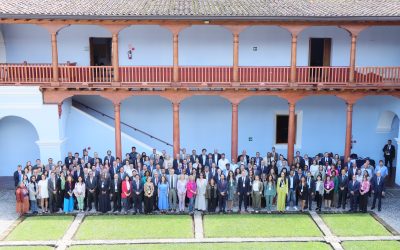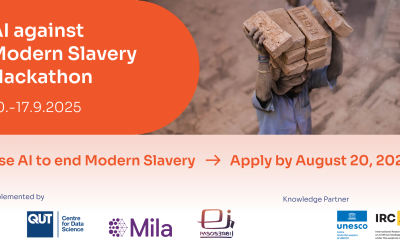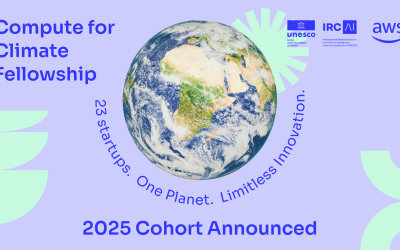NASA Harvest aims to advance the awareness and use of satellite-based Earth observations (EO) to guide decisions that support food security, stable markets, economic progress, and sustainable, resilient crop production. NASA Harvest unites agricultural stakeholders and EO experts from public and private sectors, empowering the integration of Earth data for key agricultural decisions. Harvest is a neutral convener that is uniquely able to foster mutually beneficial partnerships between diverse actors in agriculture. Their multidisciplinary Consortium includes researchers, farmers, agribusiness, economists, aid organizations, technology developers, and decision-makers – all working together to turn EO into actionable information for food security and production.
As announced in the previous article, the IRCAI Scientific Program Committees and the IRCAI Scientific Journal Editorial Board have completed their review of the Global Top 100 project submissions. 10 solutions were deemed “outstanding projects” based on their centrality of AI, the potential impact on relevant SDG(s), demonstration of potential in completed work (either proof of concept or completed research paper), and ethical design. The aim of this article is to introduce the project to relevant stakeholders and the broader public and to make the voices of the NASA Harvest team heard on the world stage.
NASA Harvest is developing solutions that provide information on agricultural production and land use that support the attainment of several SDGs as well as monitoring their achievement via the Global Indicator Framework. Harvest contributes to Goal 2: Zero Hunger, water (Goal 6), responsible consumption and production (Goal 12), climate action (Goal 13), life on land (Goal 15), and global partnerships for sustainable development (Goal 17).
Towards SDG-2 targets 1 and 2, Harvest is using ML and EO data to accelerate the availability, timeliness, and quality of information on crops. This feeds into processes for early warning of crop failures and production shortfalls as well as empowering decisions related to food security, including global food aid, (re)insurance activation, and farmer response. (SDG2)
Harvest maintains a satellite-based Global Agriculture Monitoring system (GLAM) developed by the University of Maryland with NASA and USDA. GLAM was customized for East Africa, enabling the implementation of the World Bank’s Disaster Risk Financing and Insurance Program. In Uganda, this program has supported >300,000 individuals in Karamoja, providing alternative livelihoods to smallholder farmers affected by drought.
Towards SDG-12 target 12.A, Harvest supports developing countries to integrate and leverage EO- and ML-based solutions with existing monitoring frameworks through extensive capacity-building programs. Since November 2017, NASA Harvest has initiated or been involved in ~30 projects globally to improve tools and grow regional and local capacity to address food insecurity.
This system also enables the delivery of newer maps and solutions using ML including crop maps and yield forecasts. Harvest’s 2019 crop map of Togo was used to implement the YOLIM program which has served more than 50,000 people. This work has garnered global recognition. Harvest Africa program director, Catherine Nakalembe, was selected as a 2020 Africa Food Prize laureate. Harvest team member Hannah Kerner was included on the Forbes 2021 “30 Under 30” list in science Christopher Justice, Harvest’s chief scientist, received a NASA Distinguished Public Service Medal.
For more information about NASA Harvest & GeoGlam










